Looking for enrichment for horses that doesn’t use food or toys? Don’t forget pasture enrichment! By adding a set of ground poles to your pasture, you can give your horses an enriched environment. Pasture poles promote movement and coordination, and give your horse extra exercise. Plus, they’re budget friendly, safe, and easy to set up. Here’s how to use pasture poles as paddock enrichment for your horse.
What Are Pasture Poles for Horses?
Pasture poles are ground poles that you add to your horse’s pasture or paddock. This enrichment activity targets proprioception, the sense of the body’s position and balance.
If you’re used ground poles in an arena to exercise your horse, the concept is similar. Here, you’ll bring the poles into the pasture to increase variety and give your horse extra exercise while at home in their paddock.
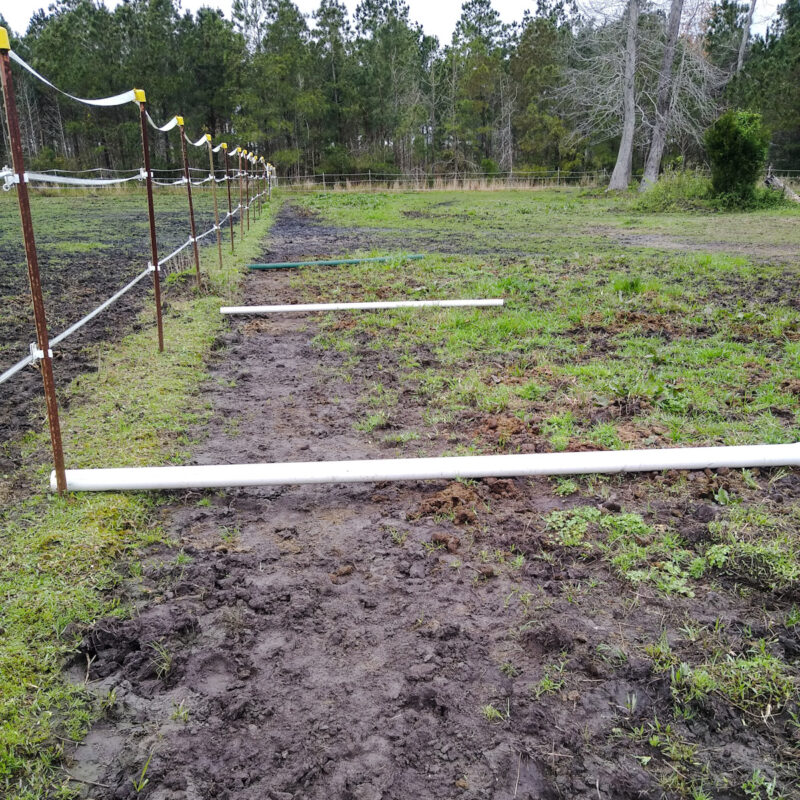
Your poles can vary in length, from a 3ft/1 meter up to 8 feet or more. They can be made of lumber, PVC pipe, or natural logs or branches. The height or diameter of the poles can vary too, from PVC only about as wide as a garden hose up to landscape timbers a few inches thick.
Different layouts change the way your horse moves around the paddock. By changing your pole layout, you’ll add variety to your horse’s space and get them moving and balancing in different ways. Pasture poles promote fitness, dexterity, muscle and joint flexibility, and response to environmental change.
What Behaviors Do Pasture Poles Encourage?
Enrichment for horses is all about encouraging natural behaviors. With pasture poles, you’ll target movement and coordination. This is a great activity for horses when you want to encourage behaviors that don’t involve food seeking.
Poles help your horse develop better proprioception – the sense of how the body is positioned. They help recreate the variety of surfaces that your horse’s wild ancestors experienced daily.
With a set of pasture poles, you’ll encourage:
- Proprioception
- Movement
- Vision
- Play
Why Pasture Poles are Great Horse Enrichment
Pasture poles are a versatile form of enrichment that doesn’t involve food. Food puzzles and feeders are a lot of fun, but other horse behaviors are important too!
Sensory behaviors are just as important as other equine activities like eating or playing, and this enrichment activity provides an opportunity for two important sensory activities: proprioception and vision.
Also, because poles are a gentle way to promote movement and coordination, they’re perfect for older horses or those who can’t be ridden due to injury or illness.
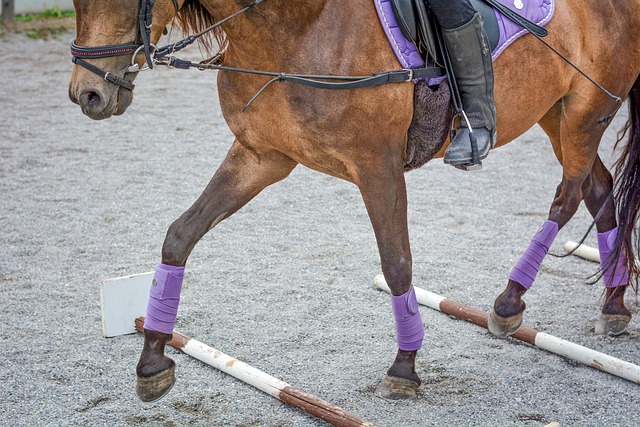
.
Novelty and Environmental Change
Pasture poles change up the environment. Horses need new and different experiences for sensory variety. This helps relieve boredom and encourages them to move around and explore.
You can change the position of the poles several times a week if you like, changing the appearance and use of your horse’s paddock. If your horse is athletic, moving your poles around will promote extra play and exercise.
Changing Space Use
Space use patterns are the way that horses travel in their paddocks. Horses tend to follow the same paths each time they travel in their space, and pasture poles can either reinforce or break up these space use patterns.
Placing poles across the direction of travel in high-traffic areas can encourage horses to use a different path, or get more exercise by stepping over the poles. Placing them alongside a path can gently direct traffic away from areas you want them to avoid.
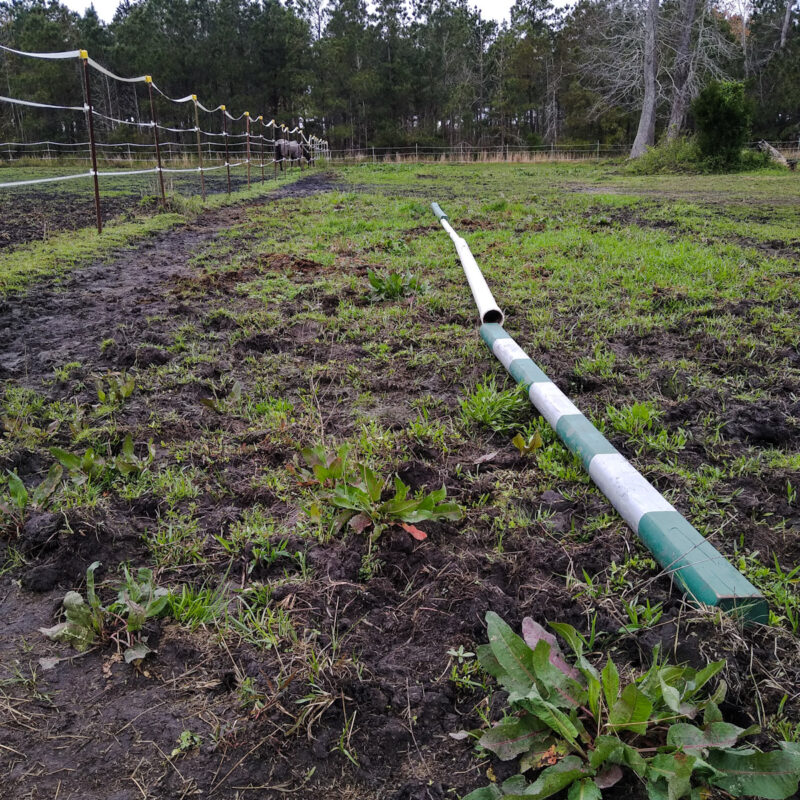
How to Use Pasture Poles
First, choose what type of poles you’ll use.
What Kind of Pole?
For this enrichment, you can use any horse-safe material. PVC and lumber make ideal choices.
Pasture poles made of wood are usually landscape timbers sold in 8 foot lengths at hardware and lumber stores. These timbers have rounded edges and are relatively inexpensive. Other types of lumber can be used, but it’s a good idea to trim off sharp, square corners with a saw for safety before use.
Pressure-treated lumber will last for several years, especially if painted.
PVC poles are often used for practice jumps or ground poles in arena work. They make excellent pasture poles as they are lightweight, long-lasting, and easy to store and set up. PVC can be purchased in many lengths and diameters.
You can also use natural limbs, branches, and small logs for. This can be a great DIY project. Unusual materials can also make good pasture poles. For a lightweight, temporary option, you can also use pool noodles.
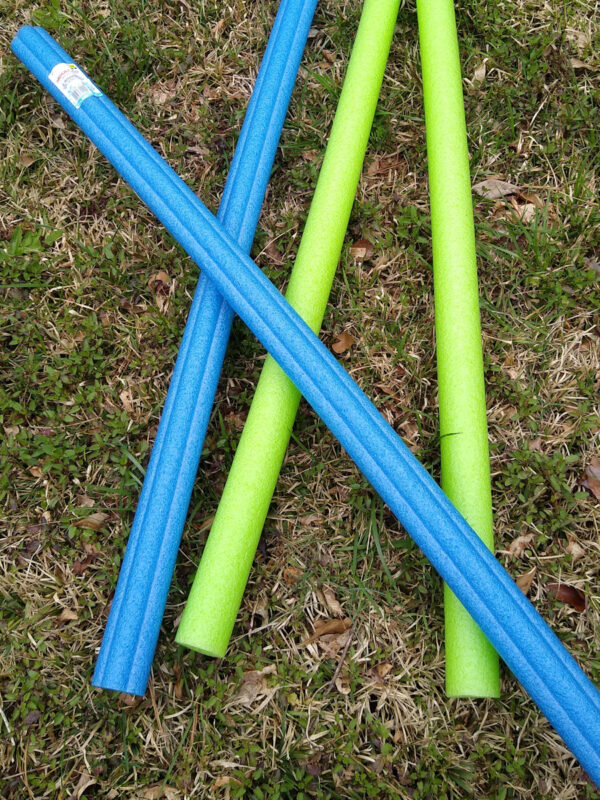
What Diameter and Length?
The diameter of the poles you choose affects how your horse uses them.
Horses are more likely to step around thicker poles, and step over thinner ones. Taller poles requires more coordination and muscle to step over. Elderly horses, miniature horses or donkeys, and horses recovering from medical conditions may be better off with thin, short poles.
You can also vary the length of the poles in the pasture. Landscape timbers are sold as standard 8 foot poles; PVC pipes can be found in 8 to 10 foot lengths.

Pasture Pole Layout
Decide what layout to create in the pasture before adding the poles. The sky’s the limit when deciding on your pasture pole layout, but here are a few ideas to get you started:
- Four to eight poles perpendicular to the fenceline, about 6 to 8 feet apart. This encourages some horses to travel further away from the fenceline. For horses who still want to walk or pace next to the fence, this layout will create passive exercise as the horse navigates over them.
- Poles set parallel to the fenceline, ten to twelve feet away from the fence. This forms a “track” that encourages travel right along the fence.
- Poles set parallel elsewhere in the pasture, creating a similar track system in a different part of the paddock
- Several poles at intervals around feeders and troughs
- Poles placed across high-traffic paths in the paddock – redirects traffic to other areas and allows “paths” to recover
Safety Concerns
These stationary ground poles are a very safe addition to the pasture, but there are some basic safety considerations to keep in mind.
Inspect all poles before use. Don’t use poles that are cracked or splintered – if you notice that PVC poles have become brittle or cracked, discard the pole.
If using 4×4 posts or lumber other than landscape timbers, trim down any sharp corners before use. If possible, affix caps to the ends of PVC pipes. This is to prevent a rolling or rising horse from striking a sharp edge or corner especially with the eyes. It’s not a likely injury, but horses are very good at finding the least probable ways to hurt themselves.
If using timbers, logs, or other larger pasture poles, supervise horses initially to ensure that they are still willing/able to navigate their pastures effectively. Don’t place poles where they can block a horse’s access to food or water if the horse is unwilling or unable to navigate the poles (from fear of a new object or lack of coordination in stepping over the obstacles).
If horses appear to trip or stumble over poles, you may need to move them to a lower-traffic area or switch to a lighter or smaller pole type.
Ready For Poles?
That’s the scoop on using pasture poles for proprioception, visual stimulation, and movement. With poles, you can create additional variety and enrichment in your horse’s paddock.
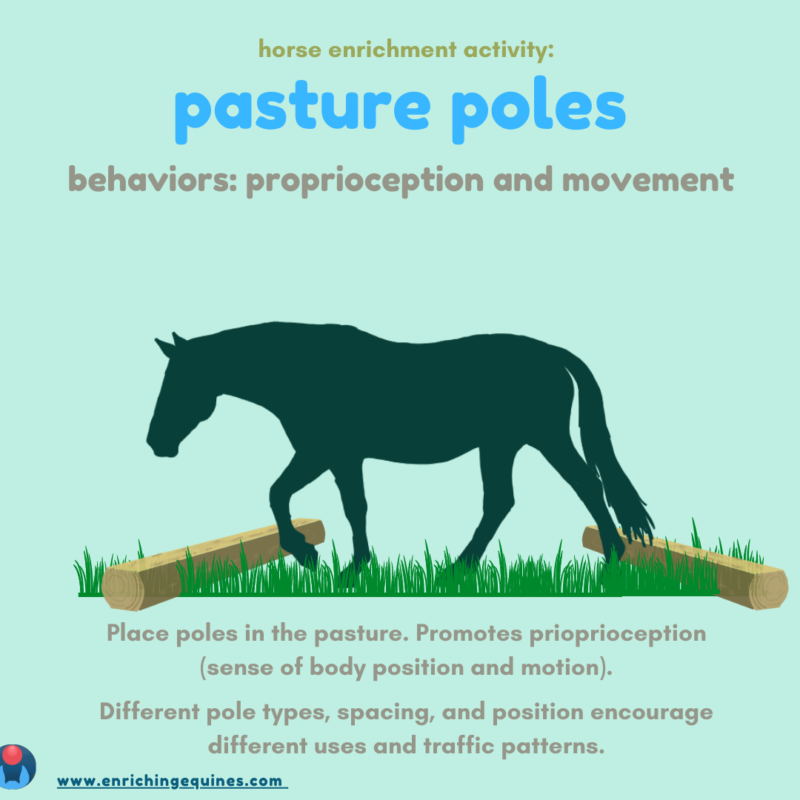
Pingback: Five Ways to Use Pool Noodles for Enrichment - Enriching Equines